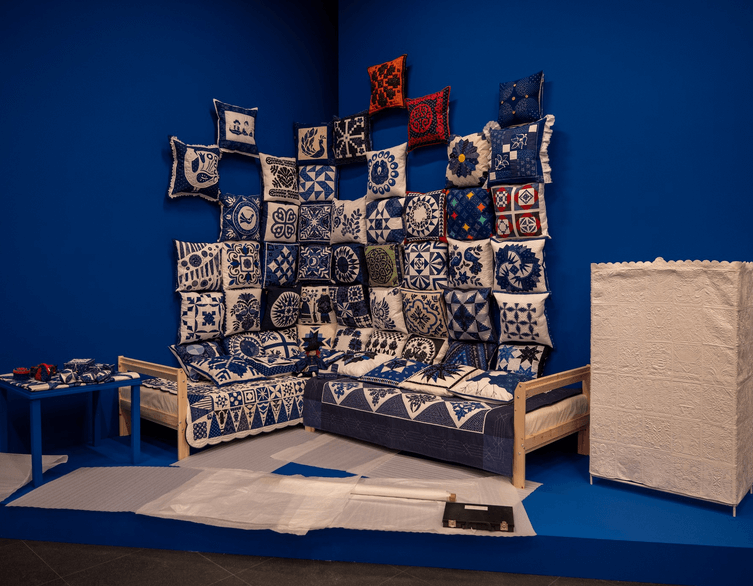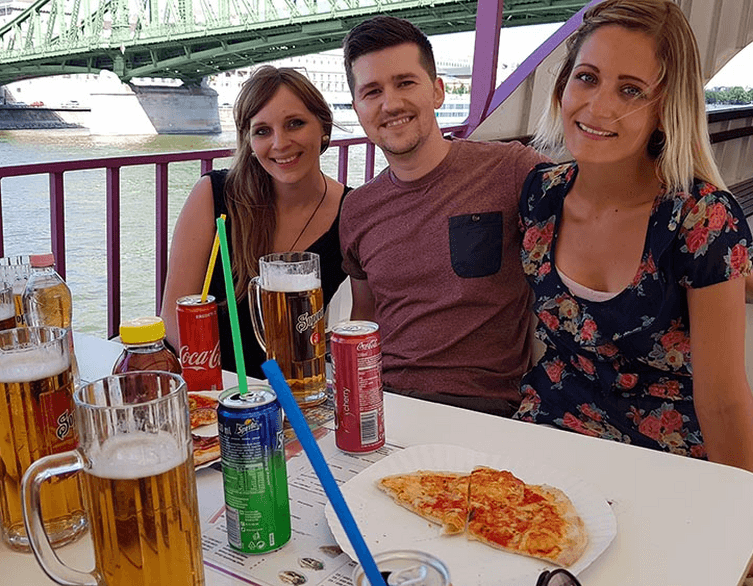Blueprint Patchwork: Where Hungarian Textile Heritage Meets Contemporary Art

Discover the intricate world of Hungarian quilting at the Museum of Ethnography’s Blueprint Patchwork exhibition, running from November 14, 2025 through February 1, 2026. This captivating showcase celebrates the art of patchwork as technique, community, and cultural heritage, bringing together award-winning contemporary works with the rich history of Hungary’s quilting tradition. For visitors seeking authentic Hungarian craftsmanship beyond typical tourist experiences, this exhibition offers an intimate look at how fragments of fabric become storytelling canvases through patient handwork and creative vision.
The Art of Blue-Dyed Patchwork
The exhibition centers on two distinctive Hungarian textile traditions: patchwork quilting and kékfestő, the traditional art of blue-dyeing. Patchwork, known locally as foltvarrás, represents one of handcraft’s most intricate forms. From small fabric fragments, entirely new textiles emerge where each stitch carries rhythm, personal narrative, and creative expression. The works combine hand and machine stitching, appliqué, quilting, and embroidery techniques to create pieces that balance heritage with contemporary experimentation.
The blue-dyed fabrics featured throughout the exhibition connect to kékfestő, a distinctive chapter in Hungarian textile culture. This traditional technique uses hand-printed patterns and indigo dye to create fabrics that feel simultaneously archaic and elegant, folk-based yet surprisingly modern. The deep blue color threading through the entire exhibition symbolizes both permanence and freedom, connecting generations of makers through shared techniques and aesthetic sensibilities.
Award-Winning Works and Artists
The exhibition showcases winners from the Inherited from Our Masters blueprint competition, organized by the Hungarian Quilters’ Guild and the Museum of Ethnography. These contemporary pieces demonstrate how traditional techniques evolve when placed in creative contemporary hands. The competition format created both rivalry and collaboration, where community creation proved equally important as individual achievement.
Featured award winners include Cecília Forczek’s Tree of Life wall hanging, which won first prize in the wall hanging category and the Varrógépcentrum award. Zsuzsa Farkas and Lilian Nyikos created Transcription, a collaborative work earning special jury recognition for its positive hand appliqué combined with hand stitching, quilting, and embroidery on cotton canvas. The Algyő Quilters’ Circle received the community special award for their wall hanging The Blue-Dye That Connects Us, celebrating collective creation through mixed techniques. Zsuzsanna Pokomándy won first prize in the pillow category, demonstrating how positive machine appliqué and mixed hand and machine work creates functional art.
Best deals of Budapest
The Hungarian Quilters’ Guild Story
Blueprint Patchwork also traces more than thirty years of the Hungarian Quilters’ Guild’s history, revealing the community networks behind these textiles. Since forming in the 1990s, this movement has grown through women’s creative communities, friendship groups, and workshops where stitching became a new shared language. The guild represents how traditional handcraft adapts to contemporary life, creating spaces where makers support each other’s artistic development while preserving techniques that might otherwise disappear.
The exhibition includes significant works from previous years, featuring pieces that achieved international recognition and helped establish Hungarian quilting’s reputation beyond national borders. These historical works provide context for understanding how the contemporary competition entries fit within ongoing creative evolution and experimentation.
Interactive Workshop Space
The Museum of Ethnography created a dedicated workshop area within the exhibition where visitors can experience patchwork’s community dimension firsthand. Here, the stitching motion gains new meaning as quiet attention and collaborative creation invite participation in a shared space. Traditional techniques transform into present-moment community experiences, letting visitors understand quilting not just as finished artwork but as meditative practice and social connection.
This interactive component particularly appeals to visitors interested in hands-on cultural experiences rather than passive observation. The workshop space demonstrates how contemporary Hungarians maintain living connections with textile heritage through active making rather than museum preservation alone.
Exhibition Details
- Exhibition Title: Blueprint Patchwork
- Dates: November 14, 2025 – February 1, 2026
- Location: Museum of Ethnography, 1146 Budapest, Dózsa György út 35
- Curator: Veronika Budavári
- Competition Organizers: Hungarian Quilters’ Guild and Museum of Ethnography
- Languages: Exhibition information available in Hungarian and English
- Accessibility: Located near Heroes’ Square and City Park, easily reached by Metro Line 1
Why Visit This Exhibition
Blueprint Patchwork offers something rare in tourist experiences: genuine insight into living Hungarian craft traditions maintained by active contemporary communities. Unlike static folk displays, this exhibition presents quilting as evolving art form where makers constantly negotiate between honoring inherited techniques and pursuing personal creative visions. The combination of competition excellence and historical context creates a comprehensive view of how traditional handcraft remains relevant in modern Hungarian culture.
For visitors interested in textiles, sustainable craft practices, women’s artistic communities, or simply beautiful handmade objects, this exhibition delivers unexpected depth. The blue color palette creates visual coherence while each piece reveals distinct artistic personalities and technical approaches. Whether you spend fifteen minutes or two hours, the exhibition invites contemplation about how small fabric fragments become unified wholes through patient, rhythmic work, much like communities themselves form through repeated shared experiences.
















